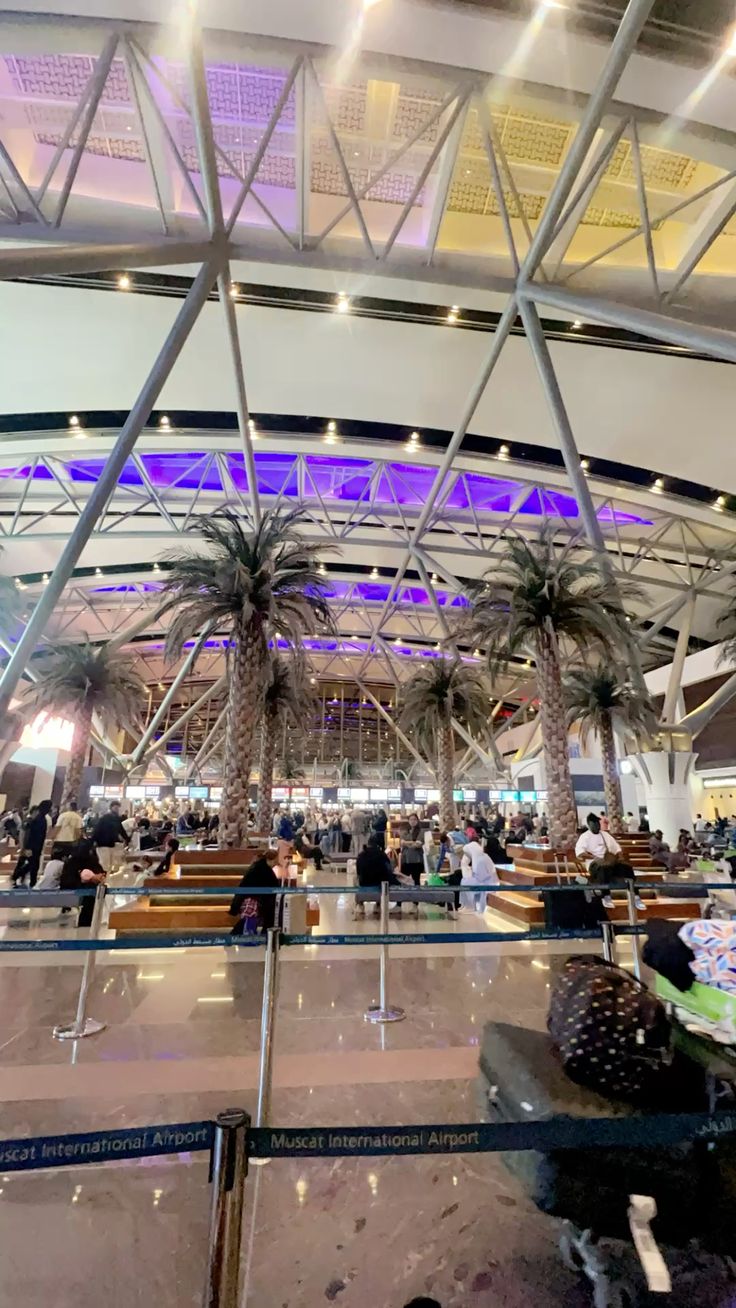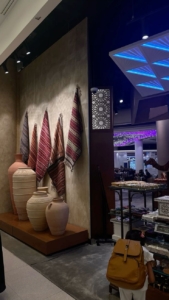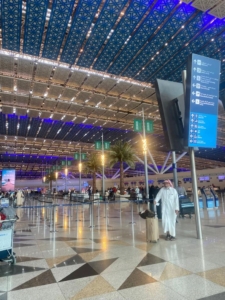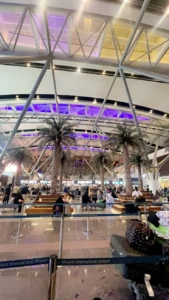

Muscat Airport Guide: What Every First-Time Traveler Needs to Know
Muscat Airport ranks among the Middle East’s most impressive aviation hubs. The facility covers 580,000 square meters, which equals 80 football pitches. This state-of-the-art facility has evolved into a modern marvel since its grand reopening in March 2018 and can handle 20 million passengers each year.
Our frequent travels through this airport have left us amazed by its perfect blend of Omani-themed architecture and advanced technology. The facility holds a unique distinction as the world’s first international airport with an operational drone detection system. We’ve created this guide to direct you through your first visit to Muscat International Airport, whether you’re flying with Oman Air, Salam Air, or other carriers that use its 45 gates and 118 check-in counters.
Getting to Muscat International Airport
Muscat International Airport sits 31 kilometers from the city center and gives travelers many ways to get there.
Transportation options from city center
Mwasalat’s public bus service is the cheapest way to get to the airport. You can take two main routes:
- Route 1A: Connects to Al Mabelah via Burj Al Sahwa (runs every 30 minutes)
- Route 1B: Links to Ruwi business district via Royal Opera House (runs every 30 minutes)
- Taxis are a faster option that will get you there in about 25 minutes.
Parking facilities
The airport offers multiple parking lots whether you want short or long term parking , The P3 shaded facility has 1,000 covered spots

Best arrival times
Immigration and baggage claim usually takes about an hour for international flights. Your trip time from central Muscat can change by a lot based on traffic. You might hit slow traffic around midday.
You should get to the airport two hours before domestic flights. International flights need more time – about three hours before takeoff. This extra time helps you breeze through check-in and security.
The trip from the airport to Muscat Old Town (Al Alam Palace) covers 35 kilometers and usually takes 40 minutes. Rush hour traffic or accidents on the highway can make this trip longer.
Terminal Layout and Navigation
The massive terminal at Muscat International Airport has three distinct piers that span three floors each. A central five-floor hub connects these piers. This modern facility covers 580,000 square meters, making it one of the region’s largest airports.
Main terminal sections
The terminal’s design features a smart layout that separates arrivals from departures. Ground level handles the work to be done and operator facilities. Upper levels manage passenger traffic flows. Airport management offices occupy the northern section. The southern area has:
- The central control center
- Primary data facilities
- Airport management offices
- Operational supervision units
The terminal streamlines passenger movement through 29 gates with dedicated landside and airside areas. The facility has 118 check-in counters and multiple immigration processing points. You’ll find 22 departure counters and 40 arrival counters here.
Walking distances between areas
The terminal’s size might seem overwhelming, but architects made passenger convenience their top priority. The three-pier design keeps walking distances manageable. Direct boarding bridges are a major upgrade from the old terminal. Passengers no longer need bus transfers between the terminal and aircraft.
The terminal’s layout puts passenger comfort first with smart facility placement. You’ll find free Wi-Fi zones and information desks throughout the complex. Clear signs in both Arabic and English help travelers move between sections easily.
The traffic area serves both arrivals and departures across 89,000 square meters. This space connects smoothly to main and internal road networks. The design works especially well with large aircraft, including A380s, thanks to its modern boarding bridges.

Check-in and Security Process
Getting through security checks and check-in at Muscat International Airport needs good timing and preparation.
Required arrival time
You should be at the airport three hours before your international flight’s departure time. This time buffer will give you enough time to complete all pre-flight procedures without stress. The check-in counters close 60 minutes before departure, so arriving early will make your experience smoother.
Passengers who need to cancel their work visas must arrive four hours before departure. The airport has extended its Passenger Boarding System processing cut-off time to 40 minutes before departure. This change will without doubt affect your pre-flight schedule.
Security screening tips
Muscat International Airport follows strict security protocols to keep passengers safe. You’ll go through a complete baggage screening process. X-ray machines are placed at the restricted departure area entrance. Your electronic devices like laptops, phones, and cameras need separate screening.
Here’s how to accelerate the security process:
- Take out electronic items from cases for separate X-ray scanning
- Put liquids (100ml or less) in clear, resealable bags
- Be ready to take off belts, shoes, and large jewelry items
- Keep your travel documents where you can reach them easily
Baggage rules
The airport uses a modern system that handles luggage of all types through automated check-in counters. Your baggage needs at least one flat surface to meet airport standards. Special out-of-gage counters are available for oversized items.
No single checked bag should weigh more than 32kg. You can skip the check-in counters and go straight to immigration if you only have hand baggage. Seal & Go offers baggage sealing services to protect against theft, damage, and weather exposure.
Web check-in starts 48 hours before departure and ends 60 minutes before flight time. This service lets passengers without checked baggage go directly to immigration. If you have luggage to check, Counter 31 is dedicated to web check-in passengers and helps with quick baggage drop-off.
Airport Services and Facilities
Muscat International Airport welcomes travelers with a well-laid-out space that meets every passenger’s needs.
Duty-free shopping locations
The airport’s airside area features five duty-free locations. Muscat Duty Free lets you pre-order items up to 30 days before your flight, with orders closing 12 hours before departure. Shoppers can find a rich collection of clothing, jewelry, and traditional Omani souvenirs.
Premium jewelry retailers Argan Gold & Argan Exclusive Gold showcase exquisite gold and diamond pieces from worldwide. Travelers can easily find WHSmith newsstands, perfume shops, and a pharmacy throughout the terminal.
Food and beverage options
You’ll find plenty of dining choices in both arrivals and departures:
- Arrivals Level: Costa Coffee and a food court with Automatic Restaurant, Coffee & More, Curry Kitchen, and idli.com
- Departures Area (Airside): DQ Grill & Chill, Irish House, Subway, Costa Coffee, and a food court with similar options
Prayer rooms and lounges
Men and women can find separate prayer spaces throughout the terminal. Departure areas A and B each have their own prayer rooms. Arriving passengers can pray at rooms on the food court level (2nd level).
Two premium lounges stand out at the airport. The Primeclass Lounge sits on the fifth floor past passport control. This space showcases beautiful Omani architecture and comes with a game zone, cinema, private suites, family rooms, and showers.
The Majan Lounge runs 24/7 on the seventh floor of international departures. Business travelers can book meeting rooms, while families enjoy dedicated spaces and children’s play areas. First and business class passengers use their airline’s lounges, with Oman Air providing separate spaces for different cabin classes.
Passengers with longer layovers can rest at the Aerotel Muscat transit hotel. The Be Relax Spa helps travelers unwind between flights with various wellness treatments.
Immigration and Visa Requirements
Getting through Muscat International Airport starts with knowing Oman’s entry requirements. The country now uses an electronic visa system that replaced the old visa-on-arrival process in February 2019.
Visa on arrival process
Oman’s visa system has changed a lot. All but one of these 100 countries and regions can now enter Oman without a visa for 14-day stays. The Royal Oman Police (ROP) handles all other visa processes through their electronic system.
Every passenger needs a passport valid for more than 6 months. We processed visas for people traveling for work, business, or family reunions through a sponsor. The sponsor must drop off the visa at the Visa Deposit counter in the arrival hall 24 hours before arrival.
Visitors from Pakistan or India need an extra ‘OK TO BOARD’ notification before flying to Muscat. This includes:
- Original Visa Deposit slip
- Photocopy of visa
E-visa application steps
You can apply for an e-visa through the Royal Oman Police’s official website. The system processes applications quickly, but you should apply at least 4 days before your trip.
To get an e-visa, you need:
- A valid passport with 6 months validity
- Proof of accommodation (hotel reservations or residential address)
- A passport-sized photograph
- Return ticket confirmation
- Sufficient funds proof
The e-visa system’s processing options
- Standard processing (4 days)
- Rush processing (2 days)
- Super rush processing (24 hours)
Muscat International Airport’s immigration process improved with E-Gates. These automated entry points run 24/7 and are accessible to:
- Omani nationals
- Expatriate residents with Omani residence cards
E-Gates use smart card and fingerprint identification to reduce queue times by a lot. The system now uses facial recognition technology, so citizens and residents don’t need to show their passports.
GCC residents must meet these requirements:
- Valid residence permit from a GCC country
- Minimum 3 months validity on residence permit
- Proof of employment in eligible professions
The electronic visa arrives in your email after successful payment and application. Remember that payment doesn’t guarantee you’ll get a visa. Need help? Contact the eVisa Call center at +968 2429 0942 and +968 2429 0826, or email [email protected].

Conclusion
Muscat International Airport shows Oman’s dedication to world-class air travel. Our years of experience with this facility tell us that first-time visitors will appreciate how modern convenience blends with traditional Omani hospitality.
The airport’s prime spot and good transport links make it easy to reach your destination. The well-laid-out terminal helps you move around easily despite its size. Security and immigration run smoothly if you stick to suggested arrival times and bring the right documents.
You’ll find plenty of ways to enjoy your time here. Browse duty-free shops, unwind in premium lounges, or try various dining spots. The new visa process and E-Gates have improved the arrival experience by a lot for eligible travelers.
The best way to have a stress-free airport experience is to prepare well. We suggest you get the official Muscat Airport app before your trip. It helps with immediate flight updates and finding your way around the terminal. This modern aviation hub truly shows what travelers should expect from a 21st-century airport. Start your Omani journey the right way experience world-class service and warm hospitality at Muscat International Airport book now!
